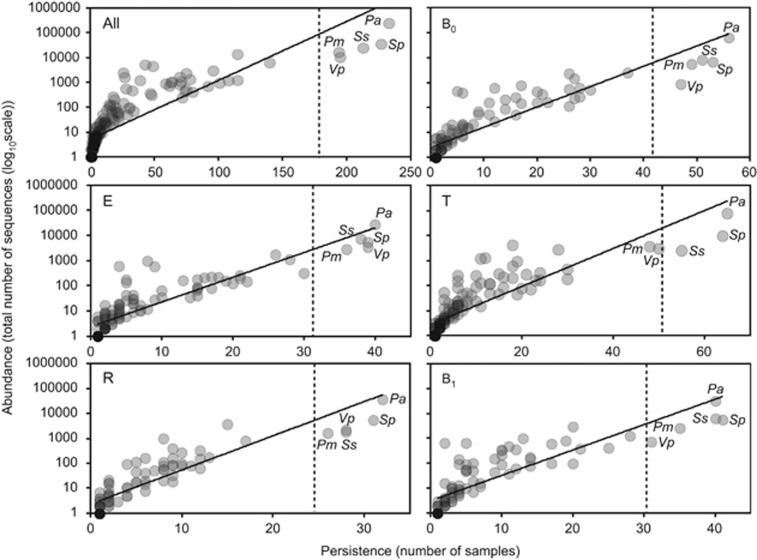Figure 1.
The persistence and abundance (total number of sequence reads) of bacteria taxa present in all longitudinal samples and within each of the five partitioned periods. (All) All samples collected from the 12 CF patients, irrespective of disease state, within the study (n=237, r2=0.7, F1,182=425.7, P<0.001); (B0) baseline pre-CFPE (n=56, r2=0.8, F1,106=429.3, P<0.001); (E) CFPE, 30 days prior to treatment (n=41, r2=0.8, F1,121=415.1, P<0.001); (T) CFPE treatment period (n=67, r2=0.7, F1,140=363.3, P<0.001); (R) recovery, 30 days post-CFPE treatment (n=32, r2=0.8, F1,86=316.7, P<0.001); and (B1) baseline post-CFPE (n=41, r2=0.7, F1,92=221.1, P<0.001). Core OTUs were defined as those that fell within the upper quartile (dashed lines), and rare OTUs defined as those that did not. Taxa defined as core across all samples are labelled in each panel: Prevotella melaninogenica (Pm), Pseudomonas aeruginosa (Pa), Streptococcus pneumoniae group (Sp), Streptococcus sanguinis group (Ss), and Veillonella parvula (Vp).

